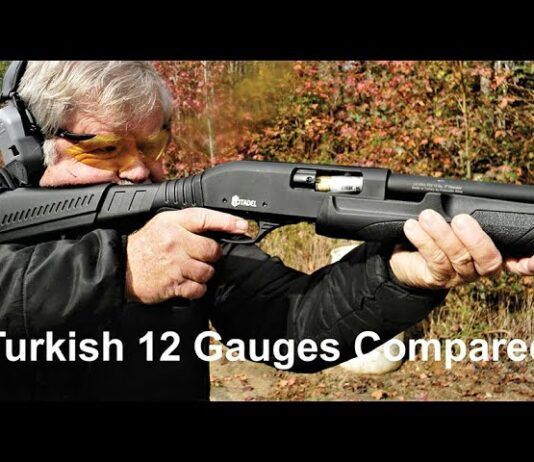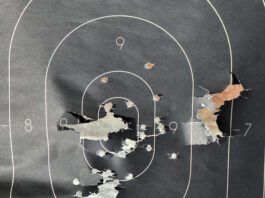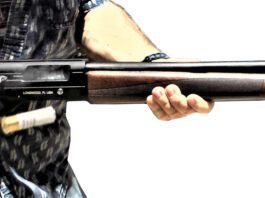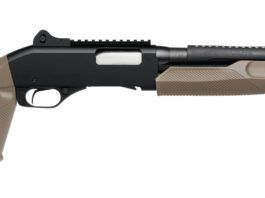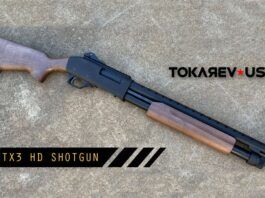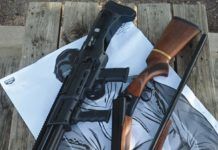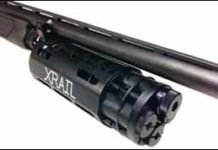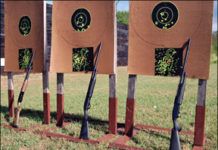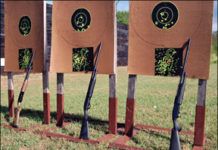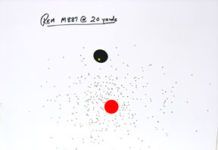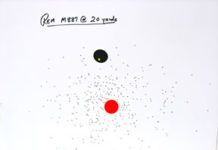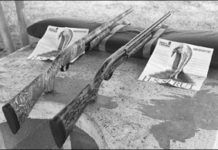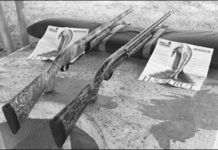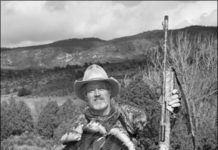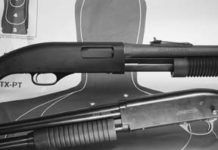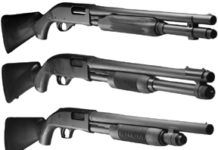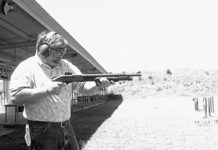12 Gauges: Side-By-Side, Double- Barrel Pump, and Tri-Barrel Guns
Meeting or exceeding the needs of modern day double-gun enthusiasts seems to be a driving factor in some of the recent offerings by firearm companies that stretch the bounds of innovation. Tagging along on this trek into a bold new world, we have responded to reader requests by examining three 12-gauge double-gun selections that range from old school to double gun plus to double gun on steroids. The three shotguns in this test are the TR Imports Silver Eagle side by side; the Chiappa Firearms Triple Threat three-barrel break open; and the Standard Manufacturing DP-12 double-barrel pump action. All three shotguns carry a price tag in the moderate to high price range — $1297 for the Silver Eagle; $1,599 for the Chiappa; and $1699 for the DP-12. Because they are all double guns of one sort or another, we tested them both as self-defense firearms and as possible clay busters, and we graded them for both categories in what certainly may be one of the most unusual match ups in Gun Tests history.
The distinction between a shooter's tools and a shooter's toys is sometimes hard to determine and often depends upon an individual's access to expendable income. In the arena of double-barreled shotguns, this distinction has been kicked into what some would call novelties, with the introduction of smokepoles that stretch the bounds of creativity.
The three 12-gauge shotguns we tested included a TR Imports Silver Eagle Ptarmigan side by side; a Chiappa Triple Threat three-barrel break open; and a Standard Manufacturing DP-12 double-barrel pump action. The DP-12's action was to pump once, then shoot twice.
Evaluating the shotguns, we gave equal footing for their effectiveness on both paper and clays. Admittedly, there was a little head shaking and comments of "What were they thinking?" in some cases, but each of the shotguns was treated with equal respect on the range. For our shooting evaluations, our test ammunition included Winchester 2.75-inch Sabot Slugs pushing 400-grain slugs at 1450 fps; Royal Buck 2.75-inch loads of nine pellets of No. 00 buckshot with an average muzzle velocity of 1345 fps; and Remington ShurShot Heavy Dove 2.75-inch loads of 1 1/8 ounces of No. 6 shot with an average muzzle velocity of 1,255 fps. In addition, we tested each firearm on clay targets with Nobel Low Recoil 2.75-inch loads moving 7/8 ounce of No. 8 shot at an average muzzle velocity of 1200 fps. We encountered no misfires with any of the loads, although the Silver Eagle failed to eject several of the heavy loads during the self-defense testing. Here are our findings:
Super-Capacity Shotgun Mag: Is Roths XRAIL a Good Buy?
All-Round Shotguns: Browning, Remington, and Winchester
All-Round Shotguns: Browning, Remington, and Winchester
SuperMag Battle: Remington NitroMag vs. Benelli SuperNova
SuperMag Battle: Remington NitroMag vs. Benelli SuperNova
Turkey 12s: Browning BPS Pump Vs. Remingtons 11-87 Auto
Turkey 12s: Browning BPS Pump Vs. Remingtons 11-87 Auto
12 Gauges: 870 SPS Rates an A+ Over Benelli, Mossberg Guns
Self-Defense Shotguns: FNs Police Handily Beats Armscor
We search the marketplace to find the best values for our readers, and in looking around, we came across CDNN Sports based in Abilene, Texas. CDNN is a gun distributor that specializes in closeouts. The public can order non-gun items directly from them, but you will need to get your local gun dealer to receive and transfer the firearms for you (usually for a $25 to $50 fee).
We logged on to CDNN's website,
We asked a four-person test team to run through these guns and to see if these pumps could stand up to the rigors of a Gun Tests evaluation. All in, we fired about 300 rounds of shotshells and slugs through each gun, some of them on the range but most in magazine-clearing speed shooting, the better to stress the operator and product and find out any flaws in the gun's performance. Here's what we found:
Choosing A 12-Gauge Shotgun: Three Pump-Gun Winners
Though it was close, we narrowly preferred the Winchester 1300 Defender over the Remington 870 Express Magnum and Mossberg 590A1 Persuader slide actions.
Shotguns, Slugs, Buckshot: Whats Right for Effective Self-Defense?
We test several loads in an affordable pump gun and learn when enough power is enough and when a lot of power is too much.

























